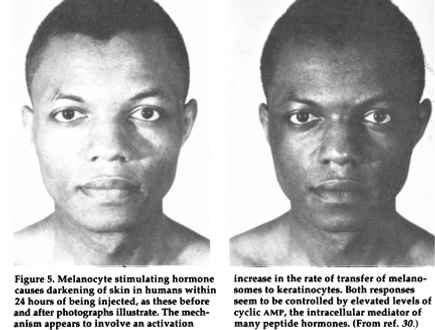
Genetics in your life: Albinism
By: Megan DiNatale


RESEARCH FOR ALBINISM
How can genetic screening can be used. What are two ethical or social implications as a result of genetic screening.
Genetic screening is a method that can help parents find out if their child could develop any genetic diseases or disorders, usually done because there is a possibility that a genetic disorder common in the family could be passed down. Genetic testing is very similar, however it is done to a person of any age. Genetic testing can also identify genetic changes (Genetic Testing and Screening, 2013). There are currently more than 1,000 genetic tests available and with advancing technology many are to come (Genetics Home Reference, 2015). There are several types of screening that can be done. One type is diagnostic screening and is used to identify, confirm or rule out a condition that either runs in the family or has been suspected due to physical indicators. This type of testing can be performed before birth or any other time during life but cannot diagnose all genetic disorders. Another type of genetic screening is parental testing where parents can go through a series of procedures to detect changes in a fetus’ genes or chromosomes before birth. Examples of such procedures include Amniocentesis, Chronic Villus Sampling and Nuchal Translucency screening. These tests can help prepare parents for a child with a disorder if the test comes back positive. There are several ethical implications involved in genetic screening, one of them being that if a test comes back positive for a genetic disorder, treatment is usually not available before birth if at all. This can cause tension for a couple because they then have to decide if they want to do more invasive tests or sometimes even consider termination. There are also social implications by have genetic screening. This includes future social consequences. While it is good to know if your child or yourself will have a genetic disorder, knowing ahead can cause tension as well as put a burden on your shoulders as well as your loved ones. For example, there is a genetic test to test for Huntington’s disease (HD), a progressive disorder that usually shows signs midway through life. If you have been tested positive for HD, you will always be waiting for it to happen, always waiting for the moment to occur. In addition, with these types of disorders comes genetic discrimination as well as limiting a person rights and privileges. That could result in it affecting employment, insurance and many other factors (Halsey, 2005).
What scientific research has been done on albinism? What medical advances have been made as a result of the research? How could these medical advances help individuals with this disorder in the future?
In around 1929 it was discovered that human skin, hair and eyes contain melanin, although at the time, it was only certain types of melanin that could be seen through their experiments (Pawelek, 1982). It has been found that the regulation of pigment formation is the key to help treat and prevent disorders such as albinism. Mammalian tyrosinase, an enzyme that controls the production of melanin in mammals, has been purified in laboratories from black mice. With this, they are able to determine the contents of this enzyme. Due to these studies biologists where able to discover the melanocyte stimulation hormone (MSH). This is found in the pituitary gland and plays a key role in the control of pigment production in mammals. They then conducted experiments by injecting extracts of pig pituitary glands into human volunteers. The results produced skin darkening in many of the volunteers. Most of the details of MHS are unknown, however the general picture has emerged in recent years that can begin to explain how the extracts made such a difference in skin pigmentation. It has been seen that certain proteins on the surface of pigment cells bond well with MHS. Under fluorescent and radioactive observation, biologists observed that soon after the binding occurs, it is transported to the premelanosomes, which is the non-pigmented membrane in melanocytes. These medical advances have made an amazing head start to returning albinism patients back to normal pigmentation (Pawelek, 1982).
